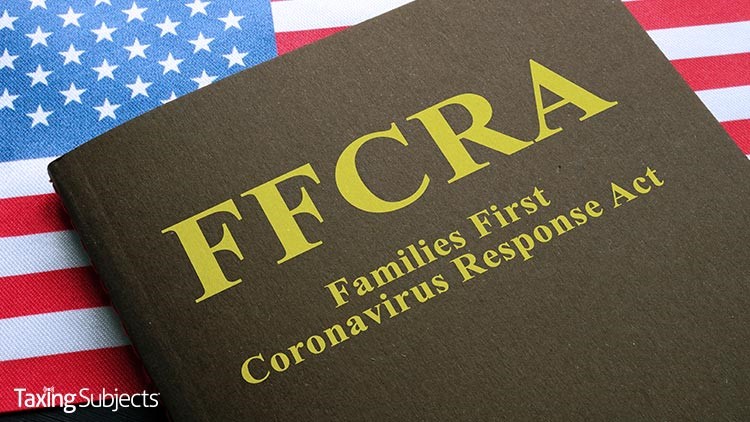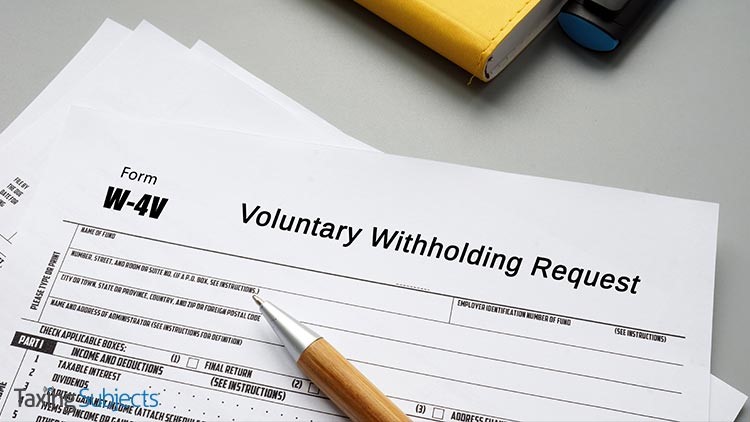by | Feb 2, 2021 | Tax Tips and News
The COVID-19 pandemic has caused significant financial strain for millions of taxpayers. From job losses and business closures to medical bills and lost revenue, unexpected costs and hardships have threatened to sink American families’ finances.
While unemployment benefits, paid sick leave, Payroll Protection Program loans, and stimulus money have helped some stay afloat, many have been forced to reach into savings and retirement plans to make ends meet. Fortunately, there is help for taxpayers who qualify for a provision of the CARES Act. It’s called a Coronavirus-Related Distribution, or CRD.
How does the Coronavirus-Related Distribution work?
The law allows qualified individuals—more on that in a minute—to withdraw up to $100,000 from their retirement accounts in 2020 without the 10% early distribution penalty for those under 59 1/2 years of age.
The income from the withdrawal should be reported on Form 1099-R, Distributions from Pensions, Annuities, Retirement, or Profit-Sharing Plans, IRAs, Insurance Contracts, etc., in three equal amounts over three years. The law gives taxpayers three years to spread the income out for tax purposes, but they’ll still be responsible for taxes on the withdrawal on a ratable three-year basis. So, if they don’t pay taxes on at least a third of the withdrawal in 2021, they’ll have to do it later—plus possible penalties.
Many taxpayers will take advantage of spreading the tax liability of their CRD distribution over three years, but others may prefer to pay tax owed in a single year. Those who choose to pay everything off in one year will still need to report the distribution on Form 1099-R.
Unfortunately, Congress has declined to extend the withdrawals past 2020.
Dec. 30, 2020, was the last day to take a CRD. However, if a taxpayer took a retirement distribution in 2020 and otherwise would qualify for a CRD but didn’t notify their plan provider at the time of the distribution that it would be a CRD, it is still possible to qualify. They just need to document and report the exception when they file Form 8915-E.
How do taxpayers pay back the Coronavirus-Related Distributions?
So, there are basically three payback options:
- Pay back the withdrawals within three years and escape any income tax on the total amount;
- Take longer than three years to pay back the withdrawal total and pay the income tax;
- Skip the payback altogether and pay the income tax (but pocket the withdrawal).
Remember that a plan has to allow such withdrawals to qualify for the tax break. Not all plans qualify, but most do.
Taxpayers qualify for a CRD if they, their spouse or dependents were diagnosed with the virus or if they had adverse financial consequences such as having a loss of income or being unable to work due to the pandemic.
For further reference, the IRS has a whole page of Coronavirus-related questions and answers for retirement plans.
What Coronavirus-Related Distributions payback plan should taxpayers take?
Like many tax-related issues, the best course depends on a taxpayer’s circumstances.
Generally, the consensus seems to be that the most efficient route is to pay back the withdrawal over the prescribed three years, and to file amended returns to recoup the tax already paid.
Ed Slott, writing for AARP, says the other two options share one flaw: If CRD withdrawals aren’t paid back, you don’t have those funds later for retirement.
Again, a major consideration will be the taxpayer’s own situation.
Slott also has some advice if a taxpayer’s retirement fund doesn’t allow CRDs.
“If yours does not, you can still withdraw the funds as a hardship 401(k) distribution and then treat them as a CRD on your personal tax return,” Slott writes.
For those taxpayers actively saving for retirement, Slott advises to first tap into other non-retirement assets if possible before decreasing your retirement funds.
He also strongly advises against using a Roth IRA for a CRD withdrawal. “It’s too valuable. It’s growing tax-free, and you don’t want to put a dent in that tax-free compounding. That’s your most tax-efficient and productive retirement account,” he stresses.
The key here, tax pros say, is to defer taxes. And in this case, the law allows the taxpayer to get those taxes back.
Some tax professionals also worry that many taxpayers just won’t be able to pay back the withdrawn retirement funds, possibly setting themselves up for a bigger tax bill later.
Getting a loan from one’s 401(k) isn’t necessarily the best option either. Ed Slott says while a loan from your 401(k) would be tax-free, it would have to be paid back within a strict timeframe or they would be taxable.
“You may be better off taking a CRD than getting involved with a 401(k) loan commitment and the resulting repayments and paperwork,” Slott writes. “With the CRDs, you can repay any amount you wish, on your own schedule, or not.”
Sources: “How to Take Money From Your Retirement Account Because of Covid-19“
– Story provided by TaxingSubjects.com
by | Jan 29, 2021 | Tax Tips and News
For some time now, Internal Revenue Service Commissioner Chuck Retting has been declaring 2021 as the year his agency transforms the user experience of the American taxpayer.
Now, the agency has taken concrete steps in that direction.
The IRS has created a new position—the Chief Taxpayer Experience Officer—to “help unify and expand efforts across the agency to serve taxpayers.” The IRS has also filled those new shoes, naming Ken Corbin, currently the IRS Wage and Investment commissioner, to lead the taxpayer experience effort.
Corbin will take on the new role while continuing to serve in his present position.
“I’m excited for this opportunity and, with my dedicated Taxpayer Experience Office team, look forward to helping the IRS continue to earn the trust and respect of every American. We want to help taxpayers and we will,” Corbin said.
Corbin’s new position is the first senior leadership role created within the IRS under the framework of the Taxpayer First Act, which was enacted in 2019.
The IRS delivered its Taxpayer First Act Report to Congress in January. It provided a comprehensive set of recommendations aimed at reimagining the taxpayer experience, enhancing employee training and restructuring the IRS organization to increase collaboration and innovation.
Members of the Taxpayer Experience Office, including Corbin, will report directly to the IRS commissioner.
“This position is designed to ensure the views and experiences of taxpayers and their professional representatives are factored into all aspects of IRS operations,” said IRS Commissioner Rettig. “While taxpayer service has always been a priority for the IRS, we can do more. Having Ken Corbin in this new position will provide a different way of ensuring the taxpayer component is factored into all aspects of global IRS operations and business decisions in a way that’s never been done before. Every taxpayer and every taxpayer interaction are important, and Ken will make a significant difference going forward.”
The Chief Taxpayer Experience Officer will work with business units and offices across the IRS, including Chief Counsel, the Independent Office of Appeals and the National Taxpayer Advocate.
Corbin is expected to work in coordination with the National Taxpayer Advocate, which is an independent organization inside the agency helping taxpayers with issues that can’t be resolved with the IRS.
The Taxpayer Advocate gives her stamp of approval
National Taxpayer Advocate Erin Collins sees Corbin as an excellent choice for the new position.
“The Taxpayer Advocate Service’s statutory mission is to identify problems taxpayers experience in their dealings with the IRS and to make recommendations to mitigate them. With Ken serving in this role, TAS will have a dedicated resource on the IRS operations side whose job is to address taxpayer problems. I believe his broad knowledge of tax administration, his understanding of issues impacting taxpayers, taxpayer service and taxpayer rights, and his demonstrated commitment to do the right thing will be a benefit for all taxpayers. I look forward to working closely with Ken and his team on behalf of our nation’s taxpayers to improve taxpayer service,” Collins said.
This new position isn’t just a fancy new title. Corbin will have a full to-do list the day he starts.
“The role will set the strategic direction for improving the taxpayer experience and identifying opportunities to make continuous improvements in real time for taxpayers and the tax professional community,” an IRS press release states. “This office will be focused on monitoring the taxpayer experience and providing other organizational units with information on changing taxpayer expectations, industry trends and ways to apply customer service best practices. Throughout this, there will be a continued emphasis on taxpayer rights.”
An IRS veteran, Corbin is no stranger to challenges. He’s served for more than three decades at the IRS in many different roles where serving taxpayers was a major component.
As W&I Commissioner, he oversees more than 35,000 employees across the country and serves more than 150 million taxpayers through work on the annual filing season as well as taxpayer-facing operations such as toll-free operations, tax return processing centers, Taxpayer Assistance Centers and tax forms, taxpayer correspondence and publication development.
Corbin began his career in government service at the Atlanta Service Center in 1986. During his career, Corbin has acquired an extensive background in operations from 10 years in Submission Processing, three in Accounts Management, six in Compliance Services, three in the Taxpayer Advocate Services and numerous executive assignments across the agency.
He holds bachelor’s degrees in chemistry and philosophy from Emory University in Atlanta. He is a graduate of the fall 2008 Candidate Development Program.
– Story provided by TaxingSubjects.com
by | Jan 28, 2021 | Tax Tips and News
Small and midsize companies have been particularly hard hit over the past year by COVID-19. And while those employers been stretched to their limits by paying out large sums for sick leave and family leave due to the pandemic, some help is available.
The Families First Coronavirus Response Act, or FFCRA, became law in March 2020. The law provides refundable tax credits to small and midsize employers so they can be reimbursed, dollar-for-dollar, for the cost of providing COVID-19 sick leave and family leave wages to their employees.
The FFCRA is targeted at companies with fewer than 500 employees. It gives eligible employers funds to provide their employees with paid sick leave, medical leave, and family leave related to COVID-19—whether for the employee’s own health needs or to care for others.
The U.S. Department of Labor’s Wage and Hour Division administers FFCRA’s provisions.
Generally, the law provides that employees of covered employers are eligible for:
- Two weeks (up to 80 hours) of paid sick leave at the employee’s regular rate of pay where the employee is unable to work because the employee is quarantined (pursuant to Federal, State, or local government order or advice of a health care provider), and/or experiencing COVID-19 symptoms and seeking a medical diagnosis; or
- Two weeks (up to 80 hours) of paid sick leave at two-thirds the employee’s regular rate of pay because the employee is unable to work because of a bona fide need to care for an individual subject to quarantine (pursuant to Federal, State, or local government order or advice of a health care provider), or to care for a child (under 18 years of age) whose school or child care provider is closed or unavailable for reasons related to COVID-19, and/or the employee is experiencing a substantially similar condition as specified by the Secretary of Health and Human Services, in consultation with the Secretaries of the Treasury and Labor; and
- Up to an additional 10 weeks of paid expanded family and medical leave at two-thirds the employee’s regular rate of pay where an employee, who has been employed for at least 30 calendar days, is unable to work due to a bona fide need for leave to care for a child whose school or child care provider is closed or unavailable for reasons related to COVID-19.
The Labor Department says small businesses with fewer than 50 employees may qualify for an exemption from the requirement to provide leave due to school closings or child care unavailability if the leave requirements would jeopardize the viability of the business as a going concern.
The FFCRA covers this paid leave by providing small businesses with refundable tax credits. Similar credits are also available to some self-employed individuals.
How do employers get the paid sick leave tax credits?
Employers are entitled to a fully refundable tax credit equal to the required paid sick leave they funded. The tax credit also includes the employer’s share of Medicare tax imposed on those wages and “its allocable cost of maintaining health insurance coverage for the employee during the sick leave period.”
Eligible employers are not subject, however, to the employer portion of Social Security tax imposed on those wages.
Similar conditions apply for credits to reimburse qualified family leave wages.
Employers claiming the tax credits can retain an amount of all federal employment taxes equal to the amount of qualified leave wages paid, plus the allocable qualified health plan expenses and the amount of the employer’s share of Medicare tax imposed on those wages. Payment of these amounts to the IRS can be deferred until Jan. 3, 2022, according to Notice 2021-11.
Originally, the deferred deposits of the withheld amounts from qualified employees would have been due no later than April 30, 2021, as detailed in Notice 2020-65. But that was expanded in late 2020 to stretch the deferment period to Jan. 3, 2022.
If the federal employment taxes yet to be deposited aren’t sufficient to cover the eligible employer’s cost of qualified leave wages, allocable qualified health plan expenses and the amount of the employer’s share of Medicare tax on those wages, the employer can file a request for an advance payment from the IRS using Form 7200, Advance Payment of Employer Credits Due to COVID-19.
Employers claiming any of the leave credits must keep records and documentation supporting each employee’s leave to substantiate the claim for the credits. They should also retain Forms 941, Employer’s Quarterly Federal Tax Return, and Form 7200, Advance Payment of Employer Credits Due to COVID-19.
For more information on required paid leave and the associated credits, see the Labor Department’s Families First Coronavirus Response Act: Employee Paid Leave Rights, and the Frequently Asked Questions on Coronavirus leave provisions on the IRS website.
– Story provided by TaxingSubjects.com
by | Jan 27, 2021 | Tax Tips and News
The Department of Labor reported a staggering 75.9 million initial unemployment insurance benefits claims from January 5, 2020 to January 2, 2021. The number of weekly claims spiked in March, underscoring the devastating financial impact of the COVID-19 pandemic and creating millions of first-time unemployment recipients who might not realize that those benefits are taxable.
Tax professionals are uniquely positioned to help their current and prospective clients avoid a surprise tax bill from their unemployment benefits. After all, losing a job can be a traumatic—often sudden—experience, and learning the ins and outs of unemployment tax liability while frantically trying to make ends meet can be an uphill struggle.
Why are unemployment insurance benefits taxable?
Unemployment insurance benefits are considered taxable income. “By law, unemployment compensation is taxable and must be reported on a 2020 federal income tax return,” the IRS explains. “Taxable benefits include any of the special unemployment compensation authorized under the Coronavirus Aid, Relief, and Economic Security (CARES) Act, enacted this spring.”
While many taxpayers may not realize unemployment payments are taxable, it might also come as a shock that withholding is not automatically taken from those benefits. As with other taxable income, recipients have two options for handling their unemployment tax bill:
- Choosing to withhold tax from each unemployment payment
- Making quarterly estimated tax payments
The IRS says that taxpayers who want to choose withholding need to “fill out Form W-4V, Voluntary Withholding Request, and give it to the agency paying the benefits” instead of the IRS. Further, “if the payor has its own withholding request form, use it instead.” The agency lists the following types of payments as eligible for withholding:
- Benefits paid by a state or the District of Columbia from the Federal Unemployment Trust Fund
- Railroad unemployment compensation benefits
- Disability benefits paid as a substitute for unemployment compensation
- Trade readjustment allowances under the Trade Act of 1974
- Unemployment assistance under the Disaster Relief and Emergency Assistance Act of 1974, and
- Unemployment assistance under the Airline Deregulation Act of 1978 Program
Depending on taxpayers’ individual circumstances, withholding might not be enough to satisfy their tax liability. Quarterly estimated payments can make up the difference, but those who have only ever had taxes withheld from their paychecks may not understand the process. That’s when Form 1040-ES, Publication 505, and a qualified tax professional come in handy.
How do taxpayers determine the amount they should withhold from each unemployment payment?
The IRS recommends checking the IRS Tax Withholding Estimator on IRS.gov to help calculate withholding—especially when unemployment recipients return to work.
Taxpayers who received unemployment in 2020 need to check their mailbox
Whatever agency is actually responsible for paying a taxpayer’s unemployment compensation in 2020 will send Form 1099-G, Certain Government Payments, this month. The IRS says the form “[shows] the amount of unemployment compensation they received during 2020 in Box 1, and any federal income tax withheld in Box 4.”
Where can taxpayers find more information about unemployment benefits?
Taxpayers looking for additional unemployment information not included in the above-listed forms and publications should check the “Unemployment Benefits” section of Publication 525, Taxable and Nontaxable Income.
The good news is that vaccine distribution has already begun. Unfortunately, some estimates predict masks, social distancing, and possible lockdowns could be required until the fall or winter—meaning more taxpayers may need to take advantage of unemployment insurance benefits until we’re on the other side of the pandemic.
Sources: IR-2020-185; Department of Labor, “Seasonally Adjusted US Weekly UI Claims (in thousands),” Jan. 21, 2021
– Story provided by TaxingSubjects.com
by | Jan 26, 2021 | Tax Tips and News
No matter what strategy taxpayers use to get their income taxes filed, gathering critical documents now can help make this tax season headache-free.
No matter whether taxpayers do their own taxes or employ the services of a tax professional, rounding up necessary records such as W-2s, 1099s, receipts, canceled checks and other documents can mean the difference in supporting claims of income, deductions or credits – or not.
The Internal Revenue Service says taxpayers should gather all their year-end income documents now so they can file a complete and accurate 2020 tax return and avoid a delay in receiving any refund.
Most taxpayers will get some sort of income documents near the end of January. These can include:
- Forms W-2, Wage and Tax Statement
- Form 1099-MISC, Miscellaneous Income
- Form 1099-INT, Interest Income
- Form 1099-NEC, Non-Employee Compensation
- Form 1099-G, Certain Government Payments; like unemployment compensation or state tax refund
- Form 1095-A, Health Insurance Marketplace Statements
Need More Information? Go Online
Taxpayers can access the latest information available about their federal tax account and most recent tax returns by using a secure and convenient tool on the IRS website. It’s the most direct way to get information from last year’s returns.
The IRS says in the coming weeks, individuals with an account on IRS.gov/account will be able to view the amounts of the Economic Impact Payments they received as well as the latest information available about their federal tax account.
Eligible individuals who did not receive the full amounts of both Economic Impact Payments can claim the Recovery Rebate Credit on their 2020 federal tax return. But in order to claim the full amount of the Recovery Rebate Credit, taxpayers will need to know the amount of the Economic Impact Payments they actually received.
For more information visit Secure Access: How to Register for Certain Online Self-Help Tools and learn how to create an account or how to reset the username or password.
Reminder: Unemployment Compensation is Taxable
Millions of Americans got unemployment compensation in 2020 – many of them for the first time. But it’s not free money. Such compensation is indeed taxable and must be included as gross income on their tax returns.
Taxpayers who got unemployment compensation during 2020 should receive a Form 1099-G showing their unemployment income. Taxpayers can elect to have federal taxes withheld from their unemployment benefits or to make estimated tax payments, but many do not make that choice.
In that case, taxes on their benefits will be paid when the 2020 tax return is filed. Therefore, taxpayers who did not have tax withheld from their payments could see a smaller refund than expected or even have a tax bill due.
Those who get a Form 1099-G for unemployment compensation they didn’t receive should contact their state tax agency and ask for a corrected Form 1099-G. The IRS says states shouldn’t issue Forms 1099-Gs to taxpayers they know to be identity theft victims involving unemployment compensation.
Victims of identity theft involving unemployment compensation should not file an identity theft affidavit with the IRS.
More information on taxable unemployment compensation can be found in Tax Topic 418, Unemployment Compensation, or in Publication 525, Taxable and Nontaxable Income, on IRS.gov.
Some Can Use 2019 Income for EiTC
Taxpayers who had income under $56,844 in 2020 may be eligible to claim the Earned Income Tax Credit. The IRS EITC Assistant can help determine who is eligible for the credit.
The EITC can be worth as much as $6,660 for a family with children or up to $538 for taxpayers without a qualifying child.
This tax season there’s a new rule that can help people affected by a job loss or a change in income in 2020. Under the COVID-related Tax Relief Act of 2020, taxpayers can elect to use their 2019 earned income to figure the credit if their 2019 earned income is more than their 2020 earned income.
The same is true for the Additional Child Tax Credit. For details, see the instructions for Form 1040 or Publication 596, Earned Income Credit.
Get Help Online
IRS tax help is available 24 hours a day, seven days a week on the official IRS website, IRS.gov. That’s where people can find answers to their tax questions and resolve tax issues online from the safety of their homes. The Let Us Help You page can help to answer most tax questions while the IRS Services Guide links to other important IRS services.
– Story provided by TaxingSubjects.com
by | Jan 23, 2021 | Tax Tips and News
The Internal Revenue Service closed out the week by reminding taxpayers that receiving a tax refund by direct deposit is faster and more flexible than traditional paper checks, even for those who do not currently have a bank account. To help convince the remaining 20 percent of taxpayers to make the jump to direct deposit, the IRS emphasizes that it’s easy to set up and—perhaps more importantly—free of charge.
How do I set up direct deposit for my tax refund?
Getting a tax refund issued by direct deposit is straightforward. Taxpayers only need to tell their paid tax return preparer or select the direct-deposit option when using a do-it-yourself tax preparation software, then provide their routing number and account number listed on the checks associated with their bank account. Those who don’t know where to find that information can generally find it on a paper check tied to their bank account, by logging into their bank account online, or in a mobile banking application.
The IRS also lists three other ways to get direct deposit-capable routing and account numbers:
- Online bank accounts
- Mobile banking applications
- Certain prepaid debit cards
The agency notes that taxpayers who don’t have a bank account can use the Federal Deposit Insurance Corporation (FDIC) or, if a veteran, the Veterans Benefits Banking Program (VBBP) to create an account.
Choosing direct deposit gives taxpayers options for their tax refund
Aside from getting a tax refund much faster, the IRS says that choosing direct deposit gives taxpayers flexibility in how they receive their money.
“A taxpayer can split their refund by using tax software or by using Form 8888, Allocation of Refund (including Savings Bond Purchases), if they file a paper return,” the IRS explains. “Some people use split refunds as a convenient option for managing their money, sending some of their refund to an account for immediate use, and some for future savings.”
What’s the easiest way to track a tax refund?
The IRS created the “Where’s My Refund?” online tool to help taxpayers conveniently track the status of their tax return, which provides daily updates about what the agency calls the “three stages” of filing a return:
- Return Received,
- Refund Approved, and
- Refund Sent.
Taxpayers can learn more about direct deposits by watching this IRS YouTube video: https://www.youtube.com/watch?v=2mfpKTx-5nE
Source: IR-2021-19
– Story provided by TaxingSubjects.com






